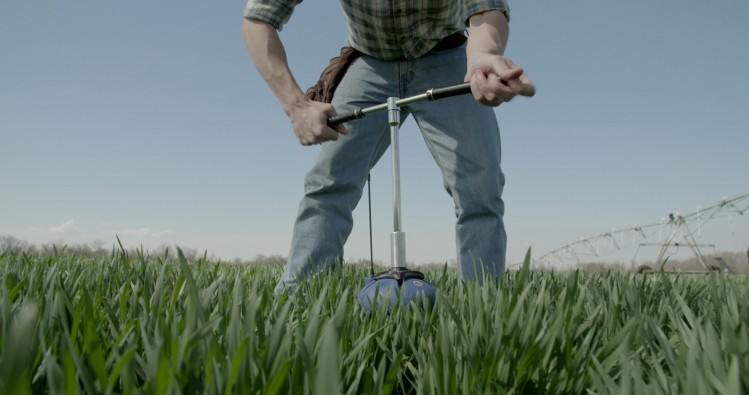Special Edition: Environmentally Friendly Feed Sector Initiatives
CropX seeks to reduce water, energy needed for feed crop production

The company's mission is to make production more sustainable through more accurate use of field irrigation and other resources while protecting the environment, said CEO Isaac Bentwich.
The company has been selling sensor units in the US and has seen an expansion in the acres covered, he told FeedNavigator. Its main market is in the US, but it is planning to offer wider coverage in the future.
“We are making soil moisture sensors more efficient, cost effective and easier for farmers to use,” he said. “In the past, these have been expensive, cumbersome and have required third-party installers to set-up for an additional fee.”
Water use
The company initially focused on reducing water use in feed crops like corn, soy and alfalfa, said Bentwich. However, it can be used with a wider range of crops and is being expanded to fit more types of production.
“Almost half of the irrigated farmland in the United States is in water-stressed areas, so water and energy savings are a top priority,” he said. “CropX is a game changer – No other system allows farmers to automate the process of optimizing irrigation.”
Tracking the water on a continual basis can provide up to 30% reduction in water use or millions of gallons across a growing season, he said. “Our results with US farmers using the CropX system in the past season, have been in line with such savings,” he added.
More targeted irrigation also saves on the energy needed to pump water and irrigate the field, he said.
“Not all fields are created equal, and they should not be watered equally,” he said. “Using CropX, farmers can automatically adapt irrigation practices based on the specific field and soil types within that field.”
System details
The system was designed to be straightforward to set up and run, said Bentwich. The original version can take about 20 minutes to install.
A farmer interested in setting up the system, logs onto the online program to locate their field and then uses company software to evaluate the field for soil type, topography and intended crop, he said. “The system then suggests how many CropX sensors the farmer should use and where they should be placed in the field,” he added.
On average a set of three sensors can be used to cover a field of 125 acres and the units are placed with help from the company’s app, he said. “The farmer follows the live map, walks out into the exact spot in the field and then self-installs the sensor in minutes thanks to the self-auguring spiral design,” he added.
However, the total number and placement of sensors are dictated by specifics of the field, he said.
Once established, the sensors connect to the internet cloud and provide data that is continuously analyzed by the company algorithm which is able to tell the farmer when, where and how much irrigation is needed, said Bentwich. In some arrangements, the tracking can be linked with a field’s irrigation system and automatically water.
The system has been used successfully in areas where cellular reception is poor, he said. It does use coverage from either Verizon or ATT&T platforms depending on which has better coverage in that area.
“CropX sensors use very efficient data transmission, equivalent to the ability to send text messages where voice or browsing connectivity doesn’t work,” he said.
Looking forward
Additionally, CropX announced Tuesday both an updated line of field sensors and investments from Robert Bosch Venture Capital GmbH (RBVC) and the Flex technology accelerator Lab IX.
“We’re really pleased to have the world’s two leading sensor manufacturers back us,” said Bentwich. “Working with these technology leaders, CropX will continue to improve our sensors.”
The newest line of sensors has a spiral-design and is easier to install than the first, he said. The aim was to save farmers instillation time.








